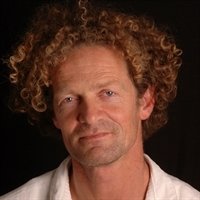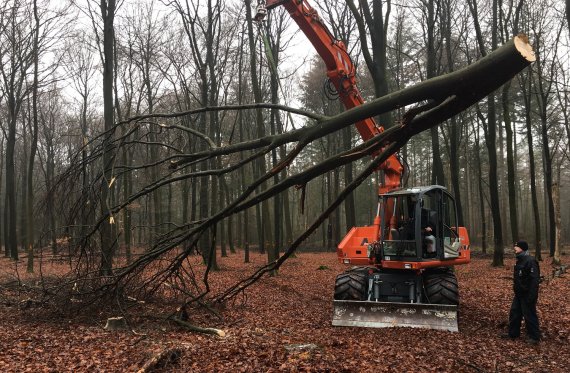The study led by Sterck seems to be a reaction to the commotion concerning logging running across the country. However, nothing could be further from the truth, says Sterck. The extensive experiment he leads had already started in February and March of this year. The idea arose long before that. The aim of the experiment is to figure out which form of logging is best for the forest and at the same time ensures sufficient wood production.
Mixing
Pressure on our forests is increasing, Sterck elaborates. ‘The utilisation of forests is becoming increasingly intensive. Not only the stems are harvested nowadays, so are the branches and buds. What consequences does that have for the forest? Can it still recover from it? How many trees can truly be removed? And is does mixing the top layer of the soil with vegetable material help or not? Those are pretty important questions for forest managers.’
The utilisation of forests is becoming increasingly intensive. Not only the stems are harvested nowadays, so are the branches and buds.
Frank Sterck
A large experiment with beech, douglas and pine should answer these fundamental questions. A total of 15 plots of one hectare of forest have therefore been “worked over” this spring across five locations in the Netherlands. One plot for every species at every location. A quarter of the trees in each plot were allowed to remain to function as a control group. In the other quarters, the researchers applied various extents of logging, in which 2/3, 1/3 or nothing remains. Within the quarters, mixing and branch wood removal have been added as extra treatments.

Kringlopen
‘A huge load of work’, Sterck looks back. ‘PhD candidate Marleen Vos worked on this full-time for six weeks together with a large team.’ Some of the cut trees were sampled to identify the composition in terms of nutrients. That is ultimately what the project is all about: to find out what the effect is of each of these processes on the nutrient and carbon cycles.
‘This is all to map four streams of nutrients’, Sterck explains. ‘Cutting and washing out of nutrients form the outgoing streams, and deposition from the air and soil weathering ensure the supply. The various forms of management determine the final balance. For example, the openness of the forest has consequences for how many nutrients are captured from the air and how much is lost into the soil.’
PhD thesis
Three of the locations of the trial are in the Veluwe, the other two in the province of Brabant. The experiment will last three years and is funded by NWO. Staatsbosbeheer, crown land Het Loo, De Hoge Veluwe park, the Unie van Bosgroepen are carrying out the study. Borgman Beheer Advies and Staro natuur en buitengebied are involved. PhD candidate Marleen Vos will write her PhD thesis on it.

 Some of the chopped trees are weighed on the spot, like this beech at the Buunderkamp Photo: Frank Sterck
Some of the chopped trees are weighed on the spot, like this beech at the Buunderkamp Photo: Frank Sterck